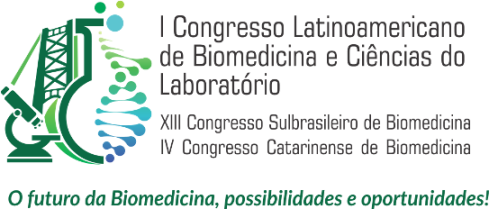Dados do Trabalho
Título
TREHALOSE PROMOTES ATTENUATION OF FUCTIONAL AND BIOENERGETIC OUTCOMES IN A MICE MODEL OF TRAUMATIC BRAIN INJURY
Fundamentação/Introdução
Introduction:
Traumatic brain injury (TBI) is caused by external forces which lead to head function damage, and account for high mortality among young aged population. TBI is supported in long term by cellular and molecular alterations such as accumulated dysfunctional mitochondria and neurotoxic proteins. These biochemical and molecular alterations are called secondary damage, and currently no specific pharmacological tools are approved to address them specifically. Autophagy is the main biological catabolic route for macromolecules such as aggregated proteins and damaged organelles recycling, and can be induced with Trehalose and FDA approved supplement.
Objetivos
Objectives:
The aim of this work was to investigate whether trehalose attenuates cognitive and biochemical outcomes 14 days after a severe TBI in mice.
Delineamento e Métodos
Methods:
An experimental study was realized using 90 days old C57/BL6J male mice, submitted to a craniotomy (CEUA:#29844) and allocated to three distinct groups: Mice submitted to a controlled cortical impact model of severe TBI with ad libitum access to water (CCI group) or a 3% Trehalose solution (TRE group); or submitted only craniotomy and access to water (SHAM group). We assessed mitochondrial function using high resolution respirometry, H2O2 production (AmplexRed®), mitochondrial membrane potential (ΔΨm) (Safranin-O) and cell viability (MTT assay) in ipsilateral hemisphere synaptosomal preparation. Western blotting analysis was performed in hippocampal homogenates to assess LC3II and pTauS396. Cognitive outcomes were assessed through Morris Water Maze, and statistical analysis performed through two-way ANOVA followed by Tukey post-hoc.
Resultados
Results:
Here we show that trehalose attenuates mitochondrial dysfunction, hydrogen peroxide production and membrane potential induced by CCI, induce autophagy and decrease hyperphosphorylation of Tau, leading to attenuation of cell viability reduction and cognitive impairment after CCI.
Conclusões/Considerações Finais
Conclusions:
Autophagy induction, particularly Trehalose has potential to exert beneficial effects over biochemical and functional outcomes after TBI, and suggest these mechanisms involvem mitochondrial damage mitigation, reinstating the neuroprotective effects of autophagic induction after traumatic brain injury.
Palavras-chave
key words: autophagy; traumatic brain injury; mitochondria.
Área
Tema livre
Autores
Wanda Osório Dorneles, Marcelo Salimen Rodolphi, Mônia Sartor, Afonso Kopczynski de Carvalho, Randhall Bruce Kreismann Carteri, Luis Valmor Cruz Portela, Nathan Ryzewski Strogulski
